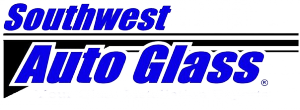
Vehicles have simplified and improved people’s lives. Traveling from one location to another is no longer a pipe dream. In the automobile industry, new inventions are constantly being made, and one such invention is ADAS (Advanced Driver Assistance System) Calibration. Let us go over the significance of ADAS calibration in greater detail.
What exactly is ADAS Calibration?
Advanced Driver Assistance Systems, abbreviated as ADAS, is a collection of vehicle safety features. These systems operate as a result of sensors strategically placed throughout the interior of your vehicle. These sensors collect vital data, which is then transmitted to a variety of systems and applications.
The following are some of the most common ADAS features found in modern vehicles:
- Lane Keep Assist
- Lane Departure Warning
- Forward Collision Alert
- Blind Spot Monitoring
- Park Assist
- Adaptive Cruise Control
- Adaptive Headlights
- Forward Collision Mitigation / Smart City Brake
The significance of ADAS calibration
The primary function of the Advanced Driver Assistance System (ADAS) is to notify the driver in order to prevent or mitigate the negative consequences of unfortunate situations.
The camera-based advanced driver assistance systems in your vehicle should be operational at all times.
Most vehicles now include backup cameras, adaptive cruise control, collision avoidance, lane assist, automated parking, and other similar technologies. All of your vehicle’s cameras and sensors must be properly calibrated in order for these features to function properly.
Advanced driver assistance systems are frequently linked to the windshield of your vehicle. When your windshield is replaced or repaired, this system must be recalibrated so that your vehicle’s safety features can continue to protect you while driving.
Calibration Methods for Advanced Driver Assistance Systems
There are two types of ADAS calibration:
- Static ADAS Calibration
- Dynamic ADAS Calibration
Static ADAS Calibration
Static calibration is a type of calibration that takes place in a static environment. Calibration is an in-shop procedure that typically takes between one and three hours to complete. Static calibration must always be performed at a certified facility.
Dynamic ADAS Calibration
However, dynamic calibration is more “user-friendly.” It is also a one- to three-hour process that is done remotely by inserting a handheld device into your vehicle. However, this method of calibration necessitates driving at a predetermined speed on well-marked roads while plugging in portable calibration instruments. If your windshield only needs dynamic recalibration after a replacement or collision, a professional technician may be able to complete the procedure at your location.
What Should You Do If Your Vehicle’s ADAS Fails?
ADAS cameras and sensors frequently become misaligned as a result of windshield replacement or a collision. As a result, your ADAS ceases to function properly. Whatever the case may be. If you’ve discovered that your safety systems aren’t working properly, the first and most important step is to have your vehicle’s ADAS recalibrated.
All you have to do is bring your car to an auto glass repair shop for service. The specialists will determine what type of calibration is required. Only professionals with extensive knowledge would be able to repair the sensors and cameras.
Advantages of ADAS:
The automated adaptation and enhancement of safety systems make roads safer. ADAS is designed to avoid collisions by alerting drivers to potential hazards or taking over control of the vehicle to avoid such dangers.
Adaptive features Automated lighting, adaptive cruise control, and pedestrian crash avoidance mitigation (PCAM) are all navigational features that alert drivers to potential hazards such as vehicles in blind spots, lane departures, and more.
Disadvantages of ADAS:
Driver discounts for ADAS-equipped vehicles are not generally offered by American insurers. This is mainly because the automakers don’t show any concrete data on increased road safety, though some insurance companies have recognized ADAS’s significant potential to reduce the number of driving-related accidents.
Choices, training, and implementation issues While the technology is available on the market, many drivers are overwhelmed by the options and are unsure how to choose which will best serve them.
Furthermore, even after such systems have been installed and implemented, there is the issue of training drivers to fully utilize them in order to maximize the risk-limiting factors of the system features.
In brief, ADAS technology is designed to make your driving experience more comfortable and safe. So it is important to keep the ADAS of your vehicle up-to-date. When your vehicle’s Advanced Driver Assistance Systems stop working properly, take it to a reputable service center.
For maximum safety, have your vehicle’s sensors calibrated as soon as possible by an auto glass expert near you or at Southwest Auto Glass if you are in El Paso, Texas, Las Cruces, New Mexico, or Alamogordo, New Mexico. To schedule an appointment, call 915-595-4444.
